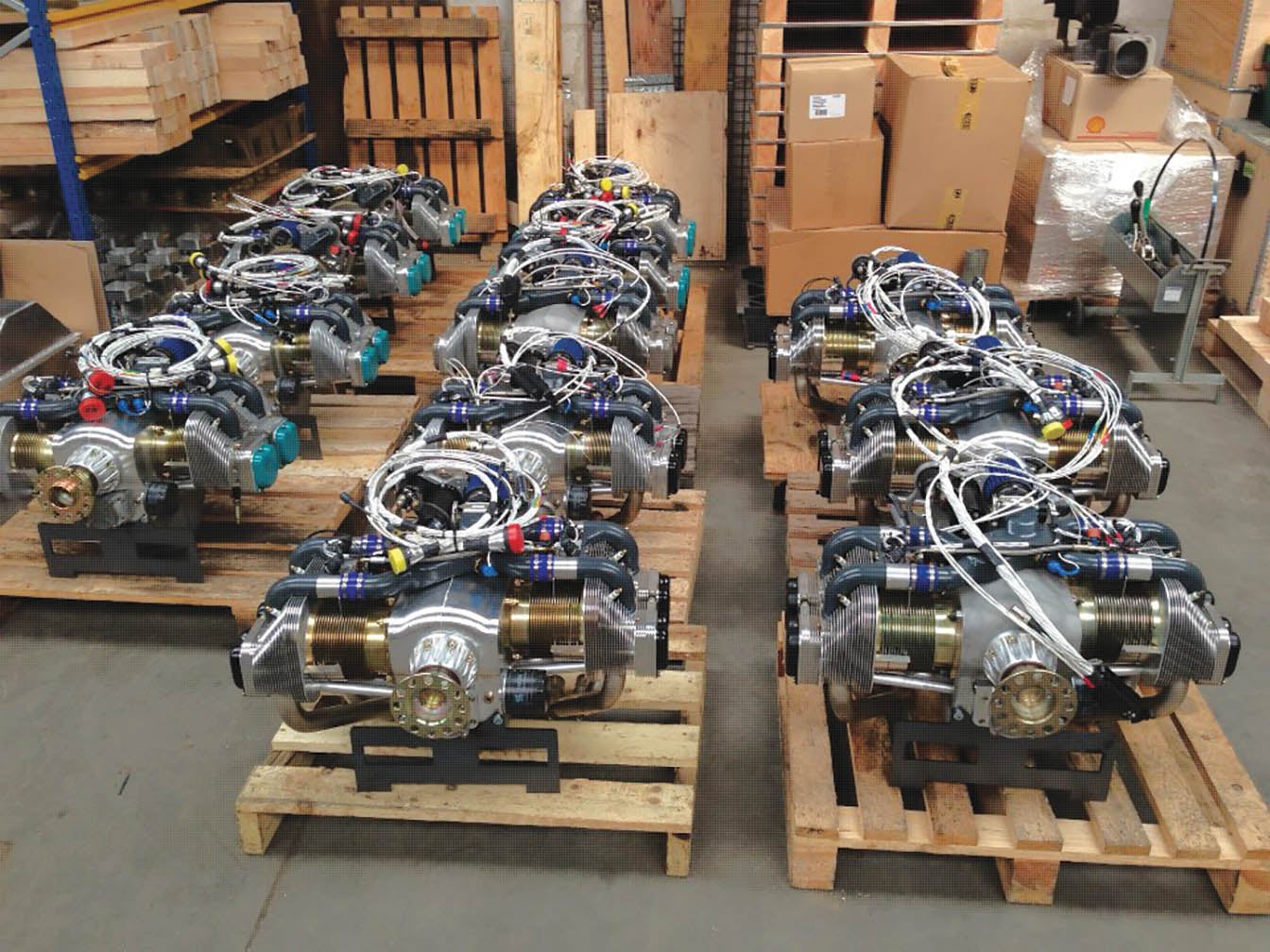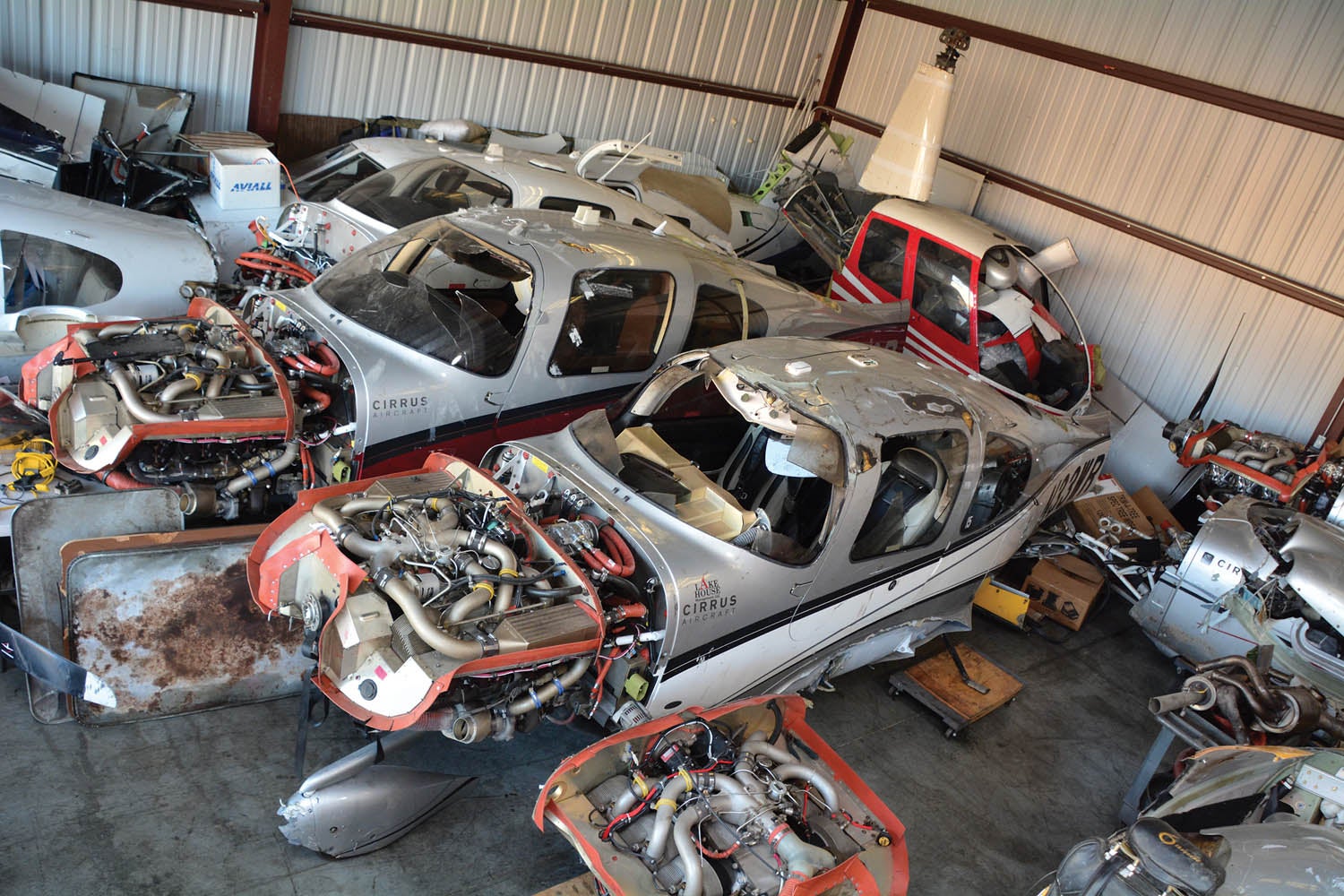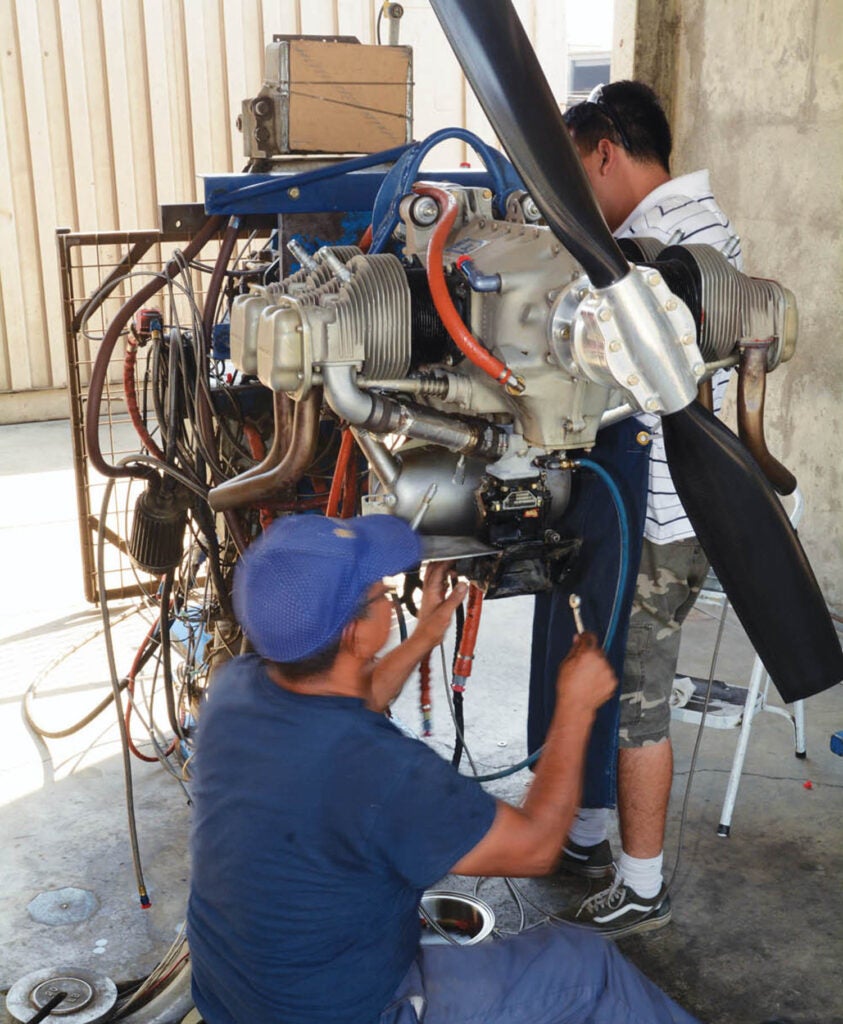There may be hundreds of different kit aircraft designs and builders, but one thing unites us all: engines. For new builders as well as those refurbishing older aircraft, the engine is a critical choice—it’s one of the most expensive parts of the project and one strongly related to safety. But we’re here to help. Showcasing which engines are available and where to find them is the point of this guide.
Supply Chain Issues
The worldwide supply chain relating to aircraft engines remains at least partially snarled. Closer to home, employment disruptions are occasionally a meaningful factor. Some companies have both. In fact, don’t go looking for Superior Air Parts in this guide. They’re focused on making parts for the industry and have, at least for now, put construction of completed engines on hold.
Demand for new engines, on the other hand, is strong. Combine high demand with low supply and you generate long delays between ordering an engine and taking delivery of it. If you take away only one concept from this buyer’s guide, make it to inquire about and order your engine as early as possible. One year in advance is likely the minimum lead time these days.

Last year we cautioned about rising prices and that advice continues to hold, but at a seemingly reduced rate than last year’s price-hike frenzy. This year, many engine makers have passed along small price increases, some held their ground and a few overseas companies have lowered prices due to the strong dollar. But typically prices are notching up. If there is a possible lighter gray in the financial overcast, as we went to press the word was international shipping costs were slowly dropping.
Again like last year, there has understandably been little development in familiar engines. Companies are doing well to get what they can built and shipped. For new ideas look to the smaller, newer companies offering liquid-cooled engines or auto conversions. And even there innovation is in short supply this year. Boutique builder Edge Performance is one manufacturer bucking the trend with new variations on their pumped-up Rotax theme.
An exception to this “nothing new” observation is the emergence of very small and simple turboprop engines from Heron and TurbAero. The jury is still out on these as at our press deadline we had yet to see these engines running. The new companies touting these new entries are quoting prices radically lower than the only similar jet engine so far available, the PBS TJ100. We have to wait and see if these new turbines truly go on sale and how they do.
Delays and higher prices aside, aviation engine buyers are on a horsepower kick. Most shops say higher powered models outsell standard displacement/power engines. So where once a Lycoming O-320 did the job, today it’s an O-340. If an O-360 was once rice to the RV-8 crowd, now it’s an IO-390.
We can light a candle to the likely demise of the two-stroke engine. Rotax is out of the two-stroke business, even if there are perhaps 100 new old-stock 582 ULs on the shelf. Instead, very light aircraft are wearing liquid-cooled four-stroke replacements from AeroMomentum, MWfly, Viking and others. Some of these sales are still quite small in number (others are more robust), but the trend is established and seems to be gaining ground.
With the new engine supply at a fast trickle kit builders are rediscovering that rebuilding existing engines is a valid path to flying. You’ll need a core engine to start with, and those are getting scarce and expensive (of course), but the idea of using a quality rebuild is gaining ground. If you want to explore that option you’ll be dealing with an overhaul shop; see the Non-Factory Sources heading in this guide. You may also be fighting for the same scarce engine parts as the new-build engines, so don’t expect miracles. But it’s worth looking into.
Selecting an Engine
For most builders, engine choice could not be simpler: You use the engine recommended by the kit manufacturer. (If you’re refurbishing, it’s likely—and smart—to stick close to what you already have to keep costs down.) An excellent example is RV kitbuilders; like most of the popular kitmakers, Van’s Aircraft publishes exact recommendations on which engine to use, then makes an offer you can’t refuse by offering the preferred Lycoming engines to their customers at a slight discount. Zenith is another supplier that partners with their preferred engine manufacturer to offer a similar convenience.
Some kitmakers leave builders a much broader set of choices. With all that freedom we must give one caution: Powering your airplane is not the place to cut corners. From both safety and performance standpoints a quality powerplant is worth the upfront cost. Obviously reliability is crucial in aircraft engines, so that’s the prime objective. However, it’s also vital to match the engine to your airframe’s needs and provide the performance required to make your overall investment worthwhile.
Another reality in the kit-aircraft engine world is that the overwhelming majority of mainstream aircraft use Rotax, Continental or Lycoming engines. That’s because all of these engines are designed for aircraft—and most aircraft are designed around them—plus they are known quantities in the aircraft maintenance and resale worlds. It’s absolutely possible to build a successful plane around other engines—such as those in this guide—but if you’re a first-time builder without a deep background in airframes and engines it’s a job best left to the seasoned builder with strong engine experience.
Auto Conversions
There are two ways to use an engine designed and built for cars in an airplane. Either do all or much of the engineering yourself or take advantage of packages developed by experienced firms. The first option is only viable for those with a significant amount of experience, especially with prop reduction drives (if one is required). Using a developed FWF package allows you to benefit from the engineering put into the conversion (for a penny on the dollar, we assure you), plus, you can talk with earlier customers with real-world experience with the engine package. Also, stick close to auto conversions that retain stock core engines. Neophytes always want to hot-rod auto engines for aircraft use, but that’s a bad idea. Stick to the proven stock configuration and leave hot-rodding to racers who are used to dead-stick landings with oil on the windshield.
Where To Buy an Engine
There are a surprising number of ways to purchase a general aviation aircraft engine. The most direct and often cost- effective method is to order the engine through your airplane’s kit manufacturer if they offer that service. Next in convenience is ordering an engine directly from an engine manufacturer or one of their distributors; just know that they don’t keep even the most common engines “in stock.” That means your engine will be built to order. Some small domestic shops—AeroMomentum, Viking and Fly Corvair come to mind—can be fairly responsive. But it’s not common that engines are sitting on shelves waiting to be shipped.
Even in what we used to call normal years this reality can add meaningful time with some of the overseas makers. Therefore, if you’re considering something such as a Jabiru, Rotec or Verner, definitely call well in advance. A year ahead is hardly too soon. The possible exception is Rotax; it sells in such volume through its North American distributors and is well-enough funded that their engines seem to be in ready supply. It’s always smart to double-check, though.
Because the market for Experimental aircraft has grown to such a significant proportion of the new-airplane world, Lycoming and Continental have established their own in-house methods to provide non-certified, often custom engines to the Experimental market. Lycoming’s solution is the separate Thunderbolt assembly shop in the corner of their main factory. It offers all sorts of boutique services and aftermarket parts. Thunderbolt engines compete directly with the better aftermarket overhaul houses such as Aero Sport Power, Barrett Performance Engines, Ly-Con and Pinnacle.
Continental also has two different engine lines. Their certified powerplants, save for an Experimental version of their legacy O-200, are sold under the Continental name. Continental’s Experimental engines for the Experimental market are sold under the Titan brand name, and interestingly enough, use Lycoming architecture. Titan makes such Lycoming clones (and Superior has until recently), but the term is slightly misleading as both companies make their own upgrades so the parts are not identical. More on these efforts later in this story.
At the other extreme, Rotax is happy in the Experimental aircraft market and sees no need for an in-house boutique or separately named engines. A Rotax is a Rotax. Well, at least until it is modified by Edge Performance and becomes an Edge engine, but that’s an entirely separate company.

Non-Factory Sources
Once past factory-new engines the purchasing process becomes less straightforward, but if the considerations go up, so do the optional possibilities and the price could go down. Well down.
Much depends on if you’re willing to consider a used or overhauled engine and if you have a core engine as a starting point. Remember, with most engines sourced from the typical overhaul shop what is thought of as a new engine is actually a combination of mainly new and a few used, rebuilt parts. No one is building new Corvair engine cases, for example, so such engines by definition have a “seasoned” case, as the machinists like to say. The same is overwhelmingly true of Lycoming/Continental rebuilds coming out of the overhaul shops, which are colloquially referred to as “fresh” or “new” engines by airport bums and casual-speaking builders. Unless there is no alternative these engines will employ used crankshafts, connecting rods and crankcases along with many smaller used parts such as gears. This is not a reliability or safety issue and is standard practice because the used parts are just fine and new replacements are hideously expensive. But it does explain why there may be considerable machining or parts searching with such engines.

Topping the roll-your-own method of arriving at a suitable engine is to work with an overhaul shop. Some of these are relatively large, well-known outfits such as the aforementioned Aero Sport Power, Barrett Performance Engines, Ly-Con Aircraft Engines and Pinnacle Aircraft Engines. These shops are used to working nationally and internationally, so crating up their wares to Nairobi or the like is not an issue. All of these shops overhaul certified engines as their bread and butter business, but also specialize in backcountry, racing, aerobatic and other performance powerplants. Some make their own line of special parts and have hot-rod knowledge even the factories likely don’t possess, plus they offer advanced services such as dynamometer testing or small parts manufacturing. If you’re looking for something special, racy or show-worthy these are good places to go.
Most other overhaul shops are far more local, ranging all the way down to one-man-in-a-hangar operations. The quality and capabilities of such outfits run the gamut from superb to no way; who’s who is up to the buyer to determine. It’s worth noting the truly small operations typically have no machining capabilities and must work with specialist firms or one of the big Experimental engine shops for things such as connecting rod reconditioning, balancing, crankshaft or lifter grinding, engine case machine work and many other functions. What they really do is provide a valuable service, sorting through all the possibilities with you, providing a local parts source and final assembling an engine from parts machined elsewhere. Where these small shops source their machine work and what volume of work they do give a clue as to their viability. Finally, they might be a little faster to deliver an engine than the bigger shops, depending on workload.
A growing trend is rebuilding Rotax engines. Rotaxes have been around long enough that used and rebuilt examples are available for notably less than a new one. East Coast distributor Lockwood reports shipping two overhauled Rotaxes a month from their affiliate, Lockwood Engine Repair, for example. Edge Performance distributor BadAss PowerSports—best known for their line of new hot-rodded Rotaxes—is also in the Rotax rebuild market, servicing the engines and gearboxes.
In the VW and Corvair world, the norm remains kit engines. That is, these engines are shipped complete but unassembled. These less expensive engines are aimed at the hands-on enthusiast who’s happy to assemble his own powerplant and keep the cash that he would have spent paying a shop to do the same. If you’re not that guy, almost all such shops will assemble the engine for you for a fee, so keep that in mind when comparing prices.
Finally, there are used engines. These can come from anywhere, including the usual classified listings such as Trade-A-Plane or Barnstormers, the local bulletin board or salvage businesses. Here, much depends on how much you know and trust the seller, or are willing to accept in terms of lessened longevity. There are definitely deals to be had, but our conservative outlook has us considering most used engines as good cores for rebuilding before putting on a new airplane.
Our Guidelines
Because KITPLANES® centers on Experimental/Amateur-Built aircraft, engines for such airframes are what we are presenting in this Buyer’s Guide. In practical terms that means a lower limit of approximately 50 hp and no upper limit other than there are few aircraft piston engines on sale today exceeding 450 hp.
Another rule is customers must be able to buy a complete, basic engine from the listings presented here. When assembling a buyer’s guide it is surprisingly difficult to separate engines actually on sale from those nearly so or promised to be within the next year. The pressure is to overpromise if you’re in the engine business, plus engine building is a complex enterprise with many pitfalls. Production runs can be excruciatingly small. Stuff happens—or doesn’t—with more regularity than any of us likes to admit and the best advice we can give is to use this guide for planning, then follow up with your own research to confirm availability.
Photos: Tom Wilson and courtesy of the manufacturers.














Steve Henry’s Highlander is powered by a Yamaha based EPeX engine. The EPeX is built by Edge performance of the popular Yamaha Apex platform, paired with a Skytrax gearbox.
Agreed. Disappointed once again, that there is no mention of the Yamaha Apex 4-cylinder and Nytro and Sidewinder 3-cylinder conversions currently being offered by companies like Edge Performance and BD Turnkey Systems. They are viable powerplants when combined with a Skytrax gearbox and are quickly proving their longevity and versatility in the aviation world.
yes I am also disappointed that they failed to mention the real providers of reliable Yamaha power . also they fail to mention Teal Jenkins Skytrax gearbox whick is where the reliability is coming from